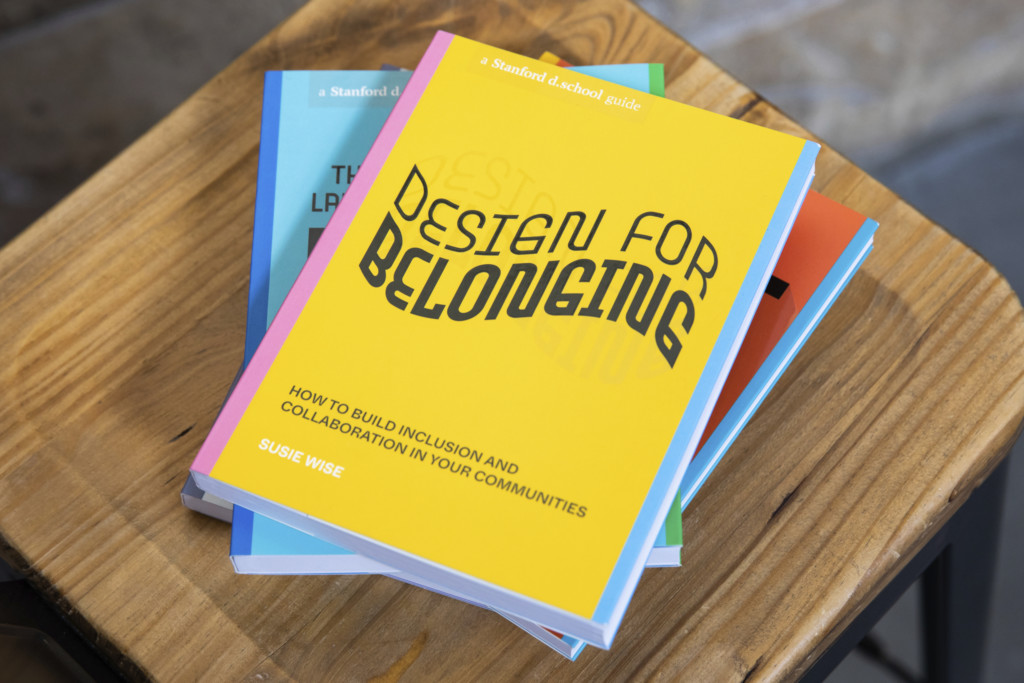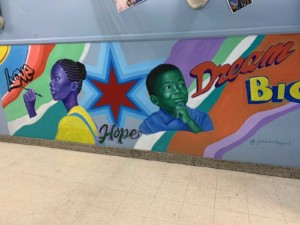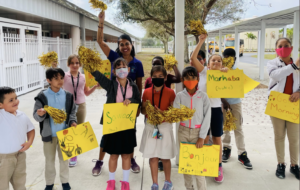Design for Belonging
Key Points
-
Design for Belonging encourages people to change, right away, the culture of their schools and organizations for the better.
-
This book was inspired by school leaders who were taking up design mindsets to improve their schools to be powerful places of learning and growth for young people.

By: Dr. Susie Wise
For years, designer and Stanford d.school educator, Dr. Susie Wise has coached overwhelmed school and community leaders across the country who didn’t know where to start.
Intro by author:
“In my work as a designer in education and equity, I have come to believe that belonging is the thing that matters most. It is the key that unlocks the best in everyone. It is the feeling that helps us all to persevere when things are difficult. I wrote Design for Belonging to encourage people to change, right away, the culture of their schools and organizations for the better. I was inspired by school leaders who were taking up design mindsets to improve their schools to be powerful places of learning and growth for young people. I also saw how they sometimes struggled when the breadth and depth of equity challenges seemed overwhelming. Designing for belonging is perfect for these challenges. To get started, choose which meaningful moments–moments that your group values–to design and then expand your set of design tools to help shape those moments into experiences of belonging. If we can feel, see, and shape belonging, we can turn schools, organizations, and groups into places where everyone, especially those furthest from opportunity, can thrive. With the incredible disruption of the pandemic, schools have an opportunity to redesign their processes and systems with students at the center. For this moment of emergent change to flourish we need to embrace the identities, stories, and strengths that students bring so that they know and feel they belong. This is true for young people and the adults that support them.”
If we can feel, see, and shape belonging, we can turn schools, organizations, and groups into places where everyone, especially those furthest from opportunity, can thrive.
Dr. Susie Wise
Below is an excerpt from Design for Belonging:
Culture is built every day in the behaviors of a group and in the meanings that accumulate from them. A culture of belonging happens when no one is explicitly watching, on days when there isn’t a special meeting to work on it. Examples of belonging are:
- Picking up a piece of trash so wheelchair access is not obstructed.
- Asking everyone to introduce themselves and ensuring that all voices are heard.
- Avoiding esoteric acronyms when they aren’t necessary.
- Using the pronouns that people prefer, and sharing your own, if and when you are ready.
- Showing respect through actions that support everyone to be their best selves.
- Honoring each other’s contributions.
To change culture, then, is about everyday acts. This means you can start small, try lots of things, and see what works. Not because your aspirations are small, but because this gives you the opportunity to tune yourself to see, feel, and notice what is changing, how it’s changing, and for whom. Noticing what is working and for whom, who belongs and who doesn’t, and when and under what circumstances gets you ready to design to change culture, to craft everyday acts of intentional design toward belonging and away from othering.
Moments of Belonging
Tuning in to how belonging feels gets you acquainted with the end goal: more belonging and less othering. To create change and build more belonging, you also have to be able to see how belonging is constructed in your life and in the systems you dwell in—your school, workplaces, and communities. This effort matters for you and for others positioned differently by race, class, history, ability, or experience.
To see your own context afresh, start by exploring your moments of belonging. These are the key points in your day, month, or year when something begins or ends. I call this period from start to finish the belonging journey; it could apply, for example, to the experience of joining your company, being a part of a school community, starting to volunteer with a new organization, or engaging in civic discourse. As you explore your own life, observe how the following moments make up the flow of your experience, how they are constructed, and for whom they are working (or not). Recognizing and exploring these moments is a key step toward digging into design. Some may be easy to identify, while others might be hiding in plain sight.
The Invitation: Implicit or explicit, formal or informal, it cues you for what is possible.
Entering: A portal, threshold, or welcome mat, it sets the stage.
Participating: Mechanisms for authentic participation are manifold.
Code Switching: This can be a nuanced moment of moving between aspects of identity.
Contributing: Perhaps the holy grail, contributing is also a circle—the more you belong, the more you can contribute; the more you contribute, likely the more you belong.
Flowing: Feeling the rhythm and the dance of the group or your role within it.
Dissenting: No community can thrive without understanding how to work with conflict and disagreement.
Repairing: Hurt happens; how you recover from it is a profound indicator of belonging.
Diverging and Exiting: What feelings should exist for those who leave and those who stay behind?
Even if you weren’t explicitly aware of these as design moments, you have likely already intentionally designed some of them. Right now, as you read about each moment, direct your attention to identifying and then feeling into the moments that you have to work with in your program, organization, or gathering. Which moments have you already thought about? Which have you not yet considered? Each one has different possibilities that are worth noticing and exploring. Pay attention to which ones are provocative, and ask yourself why.
Dr. Susie Wise is a designer and Stanford d.school educator.
“Reprinted with permission from Design for Belonging: How to Build Inclusion and Collaboration in Your Communities by Dr. Susie Wiseand the Stanford d.school, copyright© 2022. Published by Ten Speed Press, an imprint of Penguin Random House.” Illustrations copyright © 2022by Rose Jaffe.







0 Comments
Leave a Comment
Your email address will not be published. All fields are required.